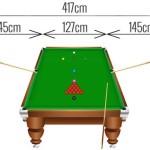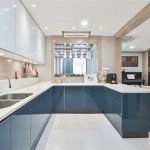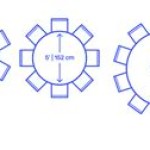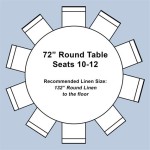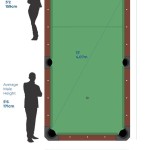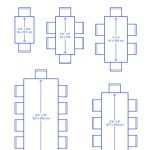Round Dining Table With Metal Legs: A Modern Foundation for Gatherings
The round dining table with metal legs represents a significant departure from traditional dining furniture. Its circular shape and the sleek, industrial aesthetic of metal legs offer a contemporary alternative to rectangular tables with wooden supports. This combination is increasingly popular in modern homes and apartments, offering a balance of visual appeal, functionality, and durability.
The design elements of a round dining table with metal legs contribute to its versatility. The absence of corners promotes inclusivity and encourages conversation, making it ideal for smaller gatherings. The metal legs, available in a variety of finishes and designs, add a touch of modern sophistication while providing stable support for the tabletop. The materials used in construction also play a crucial role in the table's overall aesthetic and longevity. Tabletops can range from solid wood and engineered wood to glass and marble, each offering a different visual and textural experience.
The selection of a round dining table with metal legs requires careful consideration of various factors, including size, style, material, and overall design. Understanding these elements is crucial for choosing a table that complements the existing décor and meets the specific needs of the user. This article will explore the key aspects of this increasingly popular furniture choice, providing insights into its advantages and considerations for selecting the right model.
Space Efficiency and Social Dynamics
One of the primary advantages of a round dining table, especially when paired with metal legs, is its space-saving design. In smaller dining areas or apartments, a round table can often fit more comfortably than a rectangular one. The absence of corners allows for easier movement around the table and eliminates the sharp edges that can be hazardous in tight spaces. This is particularly beneficial in homes with young children.
Furthermore, the circular shape of the table fosters a more intimate and inclusive dining experience. Everyone seated around the table is equidistant from the center, facilitating eye contact and conversation among all participants. This is in contrast to rectangular tables, where individuals at the ends may feel somewhat disconnected from those in the middle. The round shape promotes a sense of equality and encourages more open communication, making it well-suited for social gatherings and family meals.
The metal legs further contribute to the space-saving aspect of the table. Unlike bulky wooden legs, metal legs are typically thinner and more streamlined, allowing for more legroom and creating a sense of openness beneath the table. This is especially important in smaller spaces where maximizing visual space is crucial. The minimalist design of metal legs also complements the circular shape, creating a cohesive and modern aesthetic that enhances the overall sense of spaciousness.
The positioning of the legs is also an important factor. Some round dining tables feature a single pedestal leg, while others have multiple legs arranged in a symmetrical pattern. A pedestal base maximizes legroom and allows for easier seating, while multiple legs provide greater stability, especially for larger tables. The choice depends on the size of the table and the desired aesthetic.
Ultimately, the space efficiency and social dynamics facilitated by a round dining table with metal legs make it a versatile and appealing option for a wide range of dining environments.
Material Considerations and Aesthetic Versatility
The choice of materials for both the tabletop and the metal legs significantly impacts the overall aesthetic and durability of the round dining table. The tabletop material sets the tone for the table's style, ranging from rustic and natural to sleek and modern. Common options include solid wood, engineered wood (such as MDF or plywood with a veneer), glass, and stone (like marble or quartz).
Solid wood offers a warm and inviting aesthetic, with each piece showcasing unique grain patterns and natural variations. It's a durable and long-lasting option, but it requires proper care and maintenance to prevent warping or cracking. Engineered wood provides a more affordable alternative, offering a similar look to solid wood with greater resistance to moisture and temperature changes. A high-quality veneer can make engineered wood virtually indistinguishable from solid wood.
Glass tabletops create a modern and minimalist aesthetic, adding a sense of lightness and transparency to the dining area. They are easy to clean and resistant to stains, but they can be susceptible to scratches and chips. Tempered glass is a safer option, as it shatters into small, blunt pieces rather than sharp shards. Stone tabletops, such as marble or quartz, offer a luxurious and sophisticated look, but they are also the most expensive option. They are highly durable and resistant to heat, but they can be porous and require sealing to prevent staining.
The metal legs also come in a variety of finishes and designs. Stainless steel offers a clean and contemporary look, while black powder-coated metal provides a more industrial and edgy feel. Brass or copper finishes add warmth and sophistication, while chrome offers a sleek and reflective surface. The design of the legs can range from simple and straight to more intricate and decorative, depending on the desired aesthetic.
The combination of different tabletop materials and metal leg finishes allows for a wide range of design possibilities. A solid wood tabletop with black metal legs creates a rustic-modern look, while a glass tabletop with chrome legs offers a sleek and minimalist aesthetic. The key is to choose materials that complement each other and the overall style of the dining area.
Furthermore, the finish on the metal legs should be durable and resistant to scratches and corrosion. Powder coating is a popular option, as it provides a tough and long-lasting finish that is available in a wide range of colors. Stainless steel is also a durable and low-maintenance option, while chrome requires regular polishing to maintain its shine.
Size and Placement Considerations
Selecting the appropriate size for a round dining table with metal legs is crucial for ensuring a comfortable and functional dining space. The size of the table should be proportional to the size of the room and the number of people who will typically be using it. A table that is too large will overwhelm the space and make it difficult to move around, while a table that is too small will feel cramped and uncomfortable.
As a general guideline, allow approximately 24 inches of space per person seated around the table. This will provide enough room for each person to eat comfortably without bumping elbows with their neighbors. For a table intended for four people, a diameter of 36 to 48 inches is typically sufficient. For six people, a diameter of 48 to 60 inches is recommended. For larger gatherings, a table with a diameter of 60 inches or more may be necessary.
The placement of the table within the room is also an important consideration. Ideally, the table should be positioned in a central location, with enough space around it for people to move freely and access chairs easily. A minimum of 36 inches of clearance between the edge of the table and any walls or furniture is recommended. This ensures that people can pull out chairs and walk around the table without feeling constricted.
Consider the location of doorways and windows when determining the placement of the table. Avoid placing the table in a high-traffic area, such as a doorway, as this can create congestion and make it difficult for people to move through the space. Also, consider the natural light source from windows. Placing the table near a window can create a bright and inviting dining area, but be mindful of potential glare from the sun during certain times of the day.
Think about the overall layout of the dining area and how the table will interact with other furniture pieces, such as sideboards, buffets, or display cabinets. The table should be positioned in a way that complements the other furniture and creates a cohesive and balanced look. Consider using a rug to define the dining area and anchor the table within the space. A rug that is slightly larger than the table will help to visually ground the table and create a more inviting atmosphere.

Round Farmhouse Table Dining In Reclaimed Wood And Steel Legs Your Choice Of Color Size Finish Круглые кухонные столы обеденные Современные столики

Leisuremod Ravenna 47 In Ernut Modern Round Wood Dining Table With Metal Legs Rtm47bn The Home Depot

Round Dining Table With Pedestal Base In Reclaimed Wood Steel Legs Of Your Choice Size And Finish Kitchen

Round Shiloh Industrial Pedestal Table Custom Solid Hardwood James

Luxury Round Solid Mango Wood Industrial Dining Table With Black Metal Legs

Dining Table Base For Round And Sqare Top Industrial Style Steel Metal Kitchen Legs

Vivian Modern Round Dining Table With Metal Base Walker Edison

48 Round Dining Table In White Oak And Pewter Inlays Modern Steel Pedestal Base For At 1stdibs With Metal Legs

Reclaimed Teak Wood Round Industrial Metal Legs Dining Table

Monarch Specialties Round Fixed Standard Dining Table Composite Top With Metal Base Grey And Black Réno Dépôt
Related Posts

